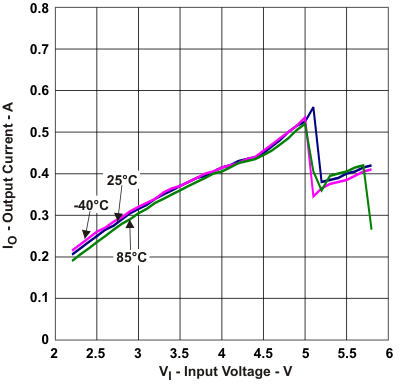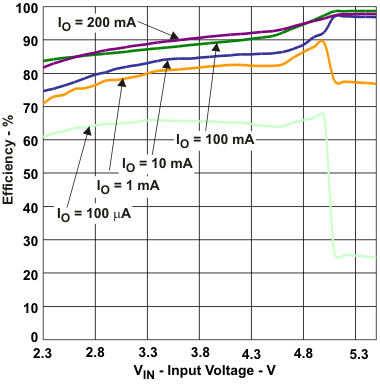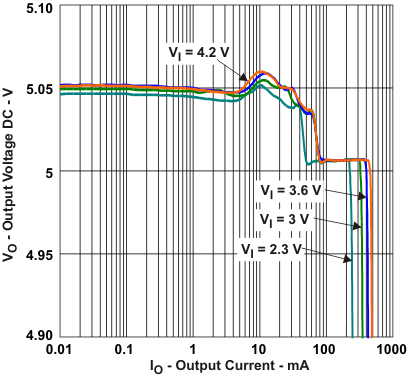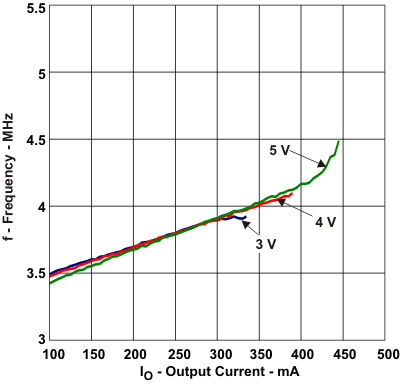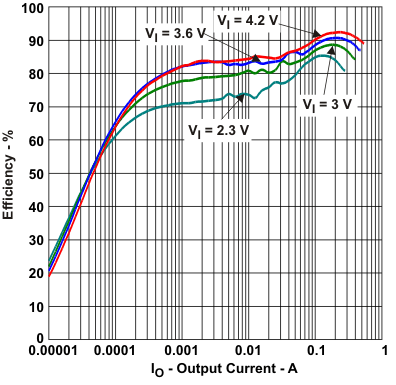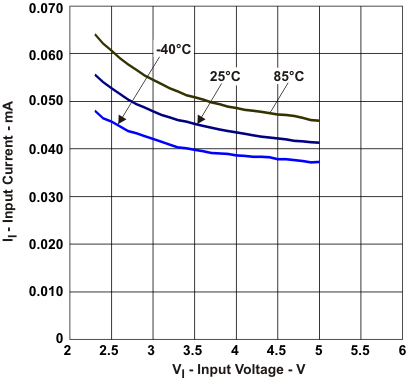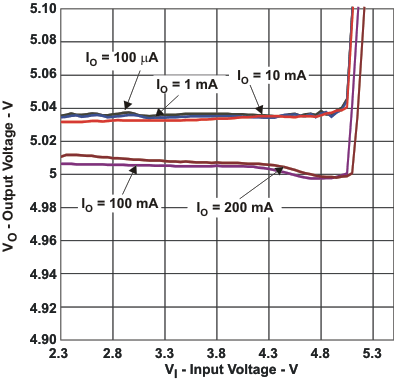SLVSAO4C December 2010 – June 2020 TPS61240-Q1
PRODUCTION DATA.
- 1 Features
- 2 Applications
- 3 Description
- 4 Revision History
- 5 Pin Configuration and Functions
- 6 Specifications
- 7 Detailed Description
- 8 Application and Implementation
- 9 Power Supply Recommendations
- 10Layout
- 11Device and Documentation Support
- 12Mechanical, Packaging, and Orderable Information
パッケージ・オプション
メカニカル・データ(パッケージ|ピン)
- DRV|6
サーマルパッド・メカニカル・データ
- DRV|6
発注情報
6.6 Typical Characteristics
Table 1. Table of Graphs
| Figure | ||
|---|---|---|
| Maximum output current | vs Input voltage | Figure 1 |
| Efficiency | vs Output current, VOUT = 5 V, VIN = [2.3 V, 3 V, 3.6 V, 4.2 V] | Figure 2 |
| vs Input voltage, VOUT = 5 V, IOUT = [100 µA, 1 mA, 10 mA, 100 mA, 200 mA] | Figure 3 | |
| Input current | at No output load (PFM Mode) | Figure 4 |
| Output voltage | vs Output current, VOUT = 5 V, VIN = [2.3 V, 3 V, 3.6 V, 4.2 V] | Figure 5 |
| vs Input voltage | Figure 6 | |
| Frequency | vs Output load, VOUT = 5 V, VIN = [3 V, 4 V, 5 V] | Figure 7 |
